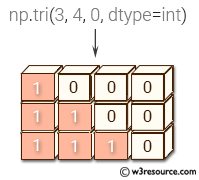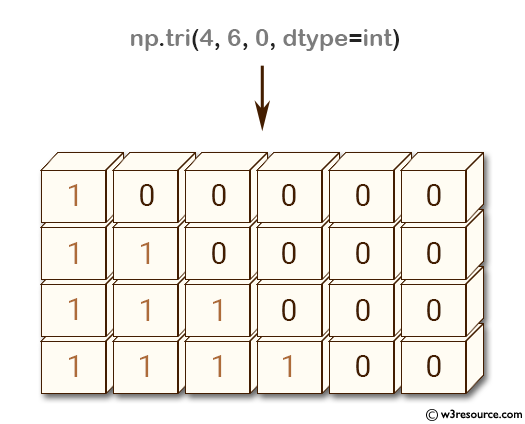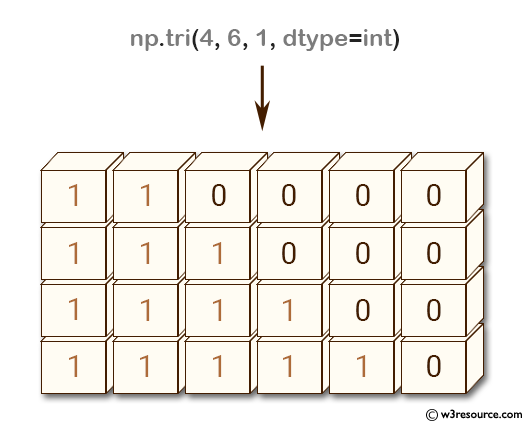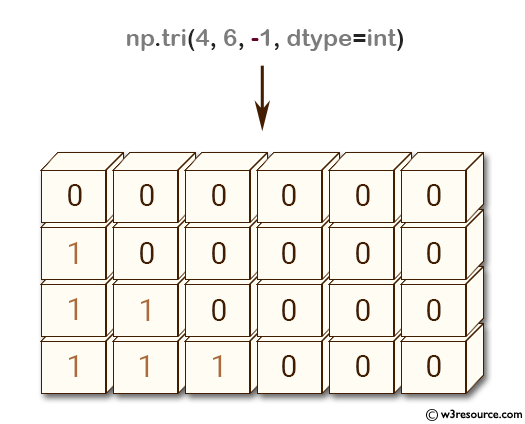NumPy: tri() function
numpy.tri() function
The tri() function is used to get an array with ones at and below the given diagonal and zeros elsewhere.
Syntax:
numpy.tri(N, M=None, k=0, dtype=<class 'float'>)

Version: 1.15.0
Parameter:
| Name | Description | Required / Optional |
|---|---|---|
| N | Number of rows in the array. | int |
| M | Number of columns in the array. By default, M is taken equal to N. | optional |
| k | The sub-diagonal at and below which the array is filled. k = 0 is the main diagonal, while k < 0 is below it, and k > 0 is above. The default is 0. | optional |
| dtype | Data type of the returned array. The default is float. | optional |
Return value:
tri : ndarray of shape (N, M) - Array with its lower triangle filled with ones and zero elsewhere; in other words T[i,j] == 1 for i <= j + k, 0 otherwise.
Example-1: NumPy.tri() function main diagonal
>>> import numpy as np
>>> np.tri(4, 6, 0, dtype=int)
array([[1, 0, 0, 0, 0, 0],
[1, 1, 0, 0, 0, 0],
[1, 1, 1, 0, 0, 0],
[1, 1, 1, 1, 0, 0]])
Pictorial Presentation:

Example-2: NumPy.tri() function above main diagonal
>>> import numpy as np
>>> np.tri(4, 6, 1, dtype=int)
array([[1, 1, 0, 0, 0, 0],
[1, 1, 1, 0, 0, 0],
[1, 1, 1, 1, 0, 0],
[1, 1, 1, 1, 1, 0]])
Pictorial Presentation:

Example-3: NumPy.tri() function below main diagonal
>>> import numpy as np
>>> np.tri(4, 6, -1, dtype=int)
array([[0, 0, 0, 0, 0, 0],
[1, 0, 0, 0, 0, 0],
[1, 1, 0, 0, 0, 0],
[1, 1, 1, 0, 0, 0]])
Pictorial Presentation:

Python - NumPy Code Editor:
Previous: diagflat()
Next: tril()
- New Content published on w3resource:
- HTML-CSS Practical: Exercises, Practice, Solution
- Java Regular Expression: Exercises, Practice, Solution
- Scala Programming Exercises, Practice, Solution
- Python Itertools exercises
- Python Numpy exercises
- Python GeoPy Package exercises
- Python Pandas exercises
- Python nltk exercises
- Python BeautifulSoup exercises
- Form Template
- Composer - PHP Package Manager
- PHPUnit - PHP Testing
- Laravel - PHP Framework
- Angular - JavaScript Framework
- Vue - JavaScript Framework
- Jest - JavaScript Testing Framework
